C1a Project (2021)
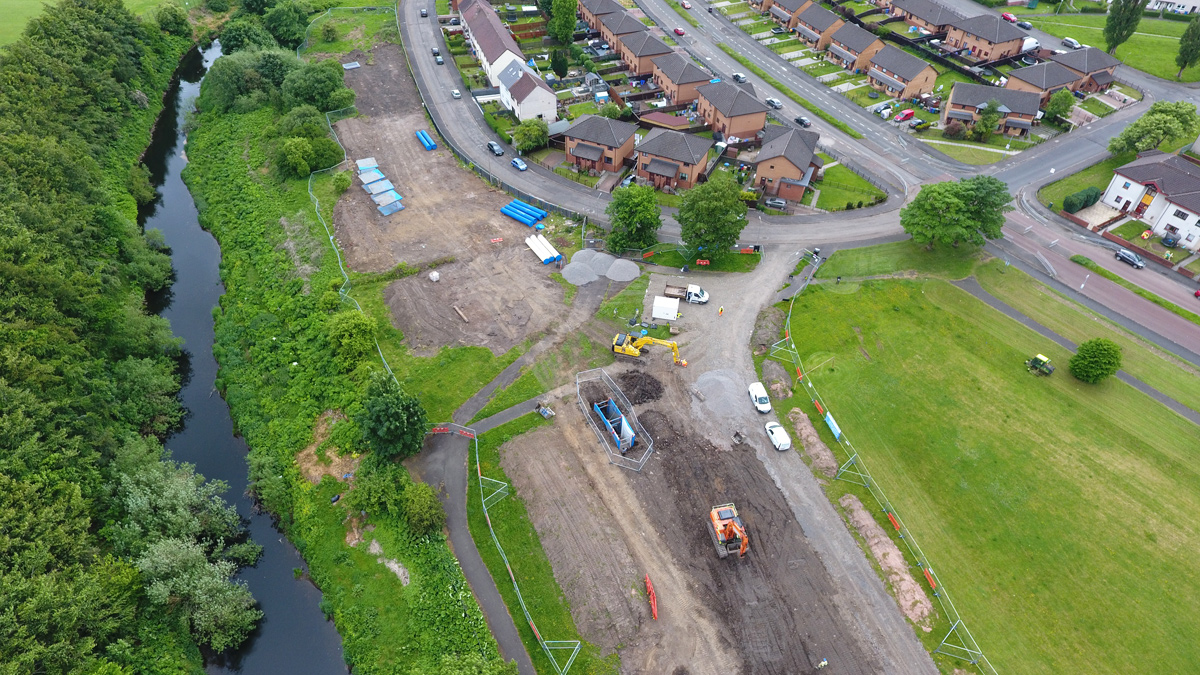
Work at Lochar Park, Glasgow - Courtesy of Paul Milligan, Caledonia Water Alliance
The Ayrshire Strategic Resilience Programme involves the transfer of water from the Milngavie WTW, located north of Glasgow, to the Ayrshire and East Renfrewshire regions southwest of the city, increasing resilience for approximately one million customers. Phase 1 (Amlaird & Gorbals) was completed in 2018 and Phase 2 (Highlees) will be completed in 2021. Phase 3, the C1a Project, will connect the Glasgow Trunk Main Network with supplies in Ayrshire. Once the C1a system is complete, the overall system will have the ability to convey flow in both directions and will combine with new assets at Highlees and Amlaird, providing added resilience to the wider Ayrshire network, including supplies to Amlaird, Corsehouse and South Moorhouse.
Project summary
The project is a duplication of the southern section of the existing C1 main that currently runs through the centre of Glasgow; starting at Katrine DSRs located on the outskirts of Milngavie in the north to the Gorbals DSRs at the Dams of Darnley in the south. The new C1a main augments the C1 main and is needed to increase capacity and security of supply for customers and future resilience demands of the local and wider network extension.
Caledonia Water Alliance (CWA) are delivering the multi-million-pound project for Scottish Water to improve the water mains network in Glasgow by installing more than 12km of 900mm diameter ductile iron main and a new pumping station.
System hydraulics
The treated water source at the Katrine DSRs is at higher elevation than the Gorbals DSRs. Therefore, the introduction of the new C1a pipeline, with its improved operating characteristics compared to the C1 will be able to deliver 450 l/s by gravity. This will reduce the reliance on pumping flow into supply; therefore reducing running costs and lowering the carbon footprint associated with operating the trunk mains network.
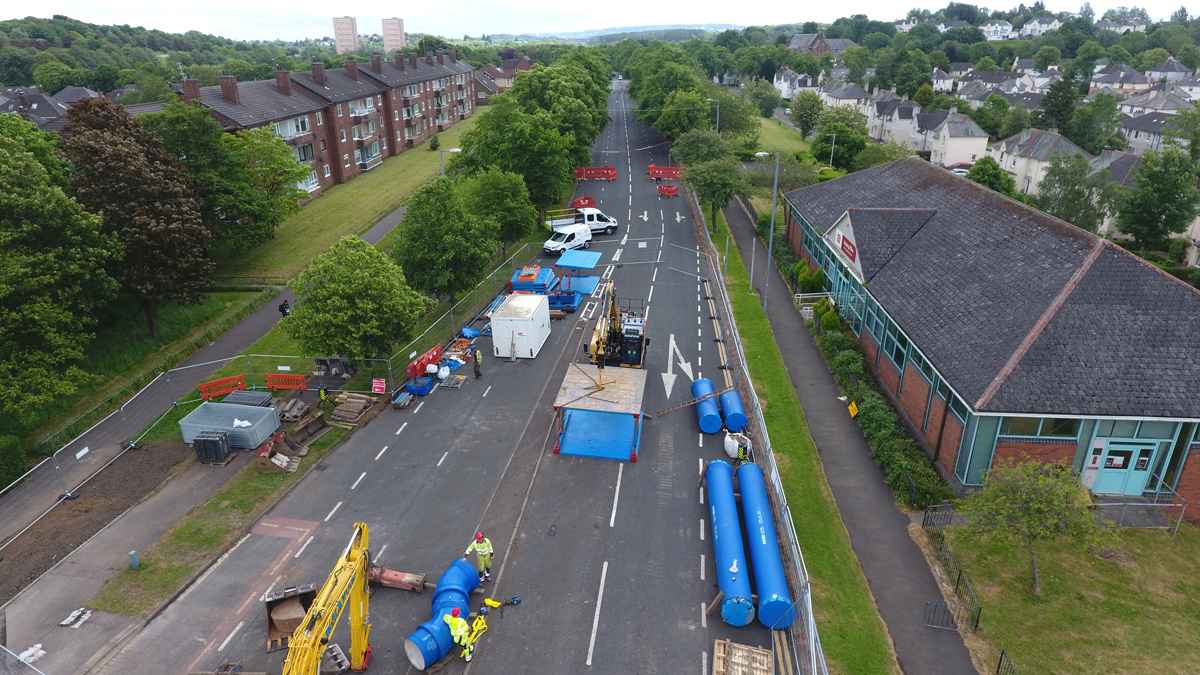
Work at Mosspark Boulevard, Glasgow – Courtesy of Paul Milligan, Caledonia Water Alliance
Ibrox Pumping Station
To allow flows of greater than 450 l/s (gravity supply limit) to transfer through the new C1a system, a new in-line booster pumping station is to be constructed. The chosen site is close to Ibrox Stadium on the south side of Glasgow. The pumping station will consist of three pumps (duty/duty/standby) and will have the ability to increase instantaneous flows through C1a from 450 l/s (gravity) up to 750 ls (pumped). The pumping station can also increase flow to Gorbals DSRs up to 900 l/s (resilience) during periods of higher demand, if treated water is required to be conveyed to the wider Ayrshire network.
Gorbals DSRs and water quality
In addition to increasing flow and the overall network resilience being improved, water quality is further protected by the installation of a new hypochlorite dosing system at the downstream end of the new C1a main. The new dosing and sampling chamber will be constructed on site at the Gorbals DSRs; this will guarantee that the treated water quality is maintained after being conveyed through the trunk mains of Glasgow.
Construction
Laying 12km of pipeline through Glasgow is logistically challenging, with multiple surface features such as rivers, major roads and rail infrastructure to pass. To connect sections of pipe laid at reduced depth along the majority of the route, CWA are also constructing four tunnelled sections of pipe along the route of the new main:
- Under the M8 motorway and the Glasgow-Ayr railway line.
- Under the Paisley Canal railway and White Cart Water.
- Under the Glasgow-Barrhead-Kilmarnock railway.
- Under the Levern Water.
Design
In support of the complex trenchless works, involving assets owned by Network Rail and Transport Scotland, third party design checks with well-established industry consultants are to be undertaken. The design and third party checks relate to the need to undertake deep soil mixing and general grouting works to support the trenchless pipe laying required at complex locations such as the M8 and the Levern Water.
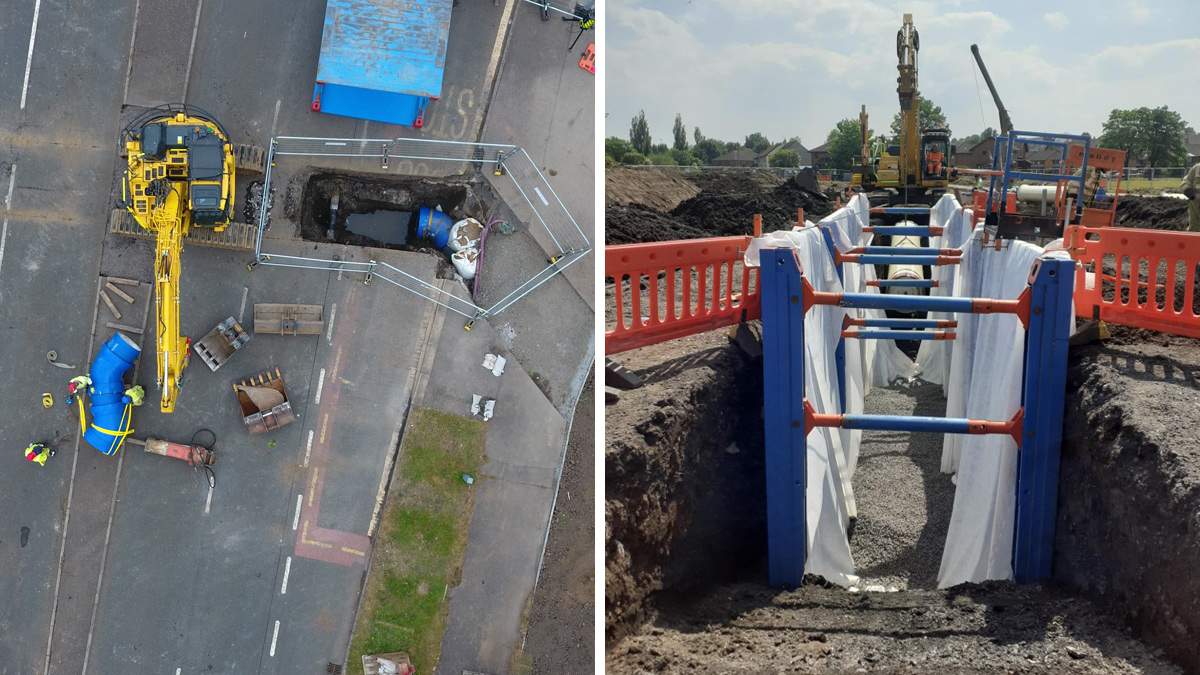
(left) Work at Mosspark Boulevard, Glasgow – Courtesy of Paul Milligan, CWA, and (right) Pipeliaying at Bellahouston Park, Glasgow – Courtesy of Caledonia Water Alliance
General
The work is highly complex, and it involves pipe-laying in areas which are heavily congested with existing utilities. To allow the C1a network to connect to the existing asset at various stages of completion without affecting the security of supply, complex design involving detailed risk and resilience, detailed planning is required. To programme the construction works and to minimise the impact to the public caused by the works, CWA and Scottish Water have worked closely with the various stakeholders and statutory agencies in the pre-planning and detailed design phase, including detailed options appraisal of pipe routes and construction techniques.
A full range of options were considered before the team selected the chosen pipeline route and the recreational and environmental importance of the parks considered throughout the process, with dedicated customer managers from CWA and Scottish Water liaising with local community and stakeholder agencies. The customer team is keen to mitigate any disruption to park users, transient customers, residents and to promote site safety.
Digital innovations
The project team are using 3D digital surveys which reduces the need for site visits by using real-time syncing of data to the GIS platform. This allows pictures of the site to be accessed remotely, which reduces the need to travel to site. Using this method on the project recently saved 0.35 tonnes of CO2 by removing the need for one site visit.
The team are also making use of a virtual consultation platform to share project information with customers and stakeholders which avoids the need to travel to community events.
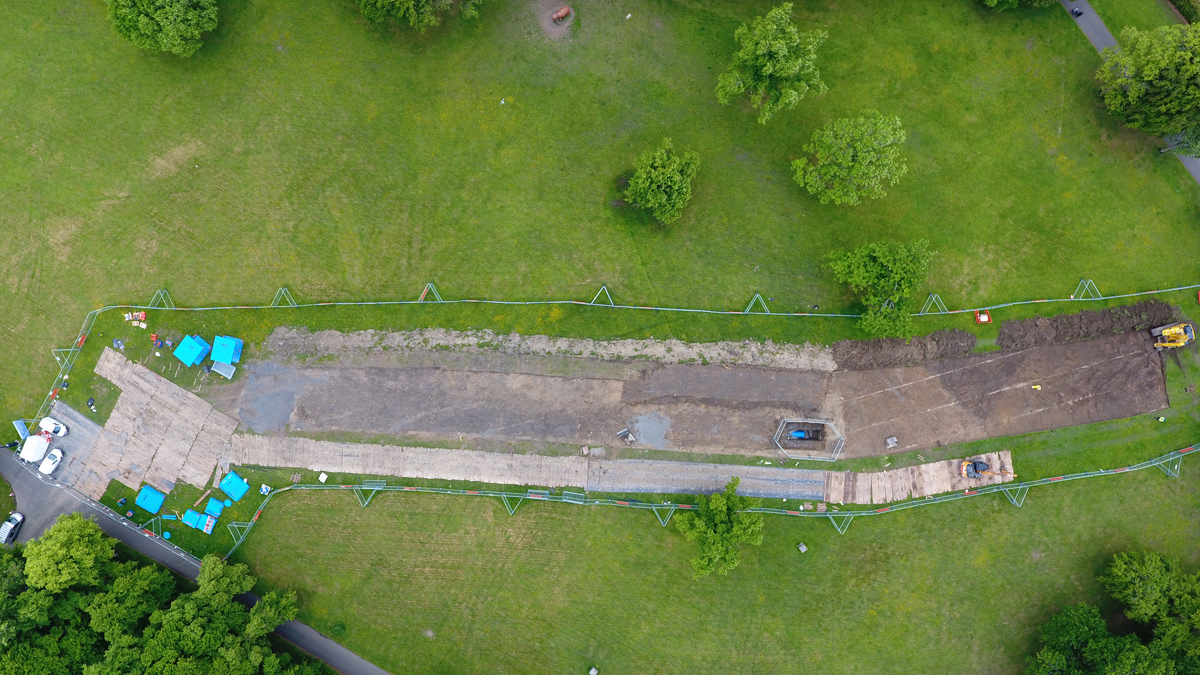
Work at Bellahouston Park, Glasgow – Courtesy of Paul Milligan, Caledonia Water Alliance
Carbon reduction
Restraint joints have been used on the project pipeline to allow CWA and Scottish Water to remove concrete thrust blocks, therefore further reducing embodied carbon associated with the capital aspects of the project. This totals an estimated 5,500m3 of concrete which has reduced carbon by approximately 16,000 tonnes; 15,000 from concrete and 1000 from transporting the concrete.
Solar panels will also offset the power demands at the new pumping station, with the new trunk mains also utilising increased gravity capacity to further reduce operational power consumption by 60%.
The project site cabins with a number of energy saving features which improve U-Values. There are high levels of insulation and passive infrared sensors to operate LED lighting. As a result of introducing these low carbon cabins, Scottish Water require these types of cabins when renewing their frameworks.
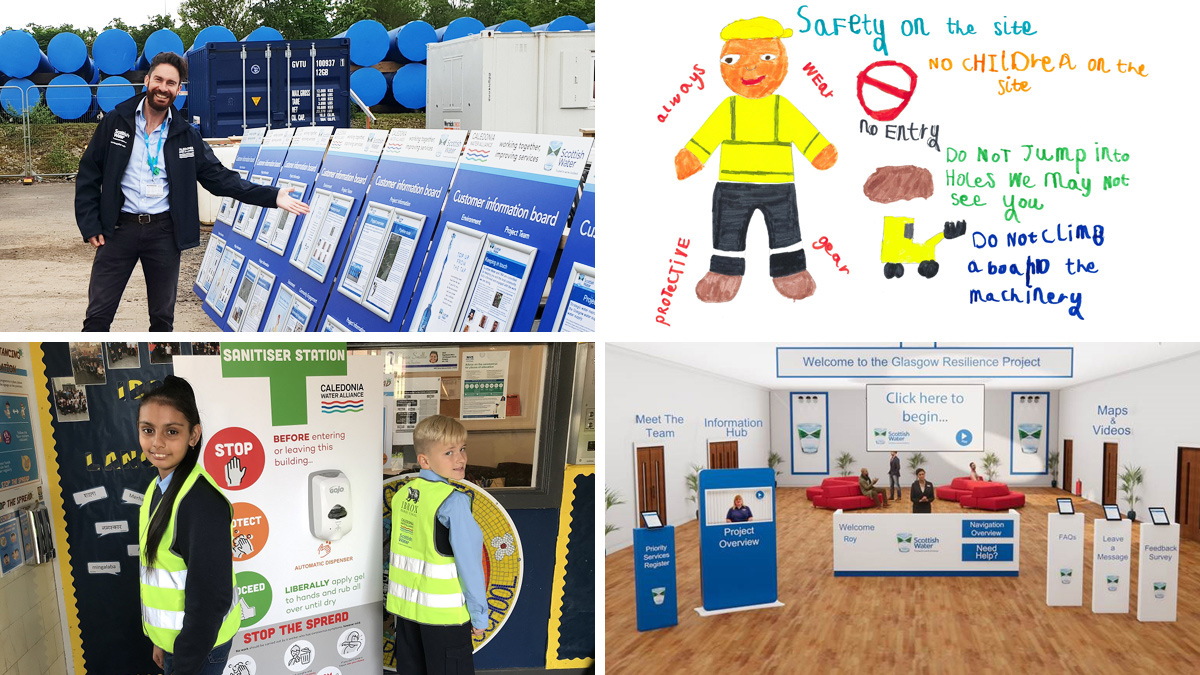
(top left) customer manager Paul Milligan with customer boards, (top right) one of the winners of the site safety poster competition from Ibrox Primary School (bottom left) CWA donated a sanitation station to Ibrox Primary during the Covid-19 pandemic and (bottom right) shows the virtual digital platform for the C1a project
Community work
Scottish Water and CWA have been supporting the projects customers and communities. The joint project team recognised early on that working closely with local schools would be important to ensure the work is delivered safely. The team arranged to supply pupils with school branded high-vis vests to make sure they are safe when they leave the school for outdoor learning. They also spent time facilitating talks to teach children how to stay safe around construction sites; pupils were able to visit the site to learn more about the project and took part in a site safety poster competition. The school’s Deputy Head Teacher said that there was no doubt that the team had put the needs of the school community at the heart of their work.
Modern apprentices
Through CWA’s Apprenticeship Scheme, three apprentices have been allocated to the project, giving experience to project managers and leaders of the future. The C1a project is a launch pad, providing the apprentices with the skills, knowledge and practical experience needed to develop both personally and professionally. The business is developing the apprentices across a range of roles connected to the project including water network operations (construction and maintenance); specialist engineering operations (groundworks and concrete structures); and mechanical and civil engineering.
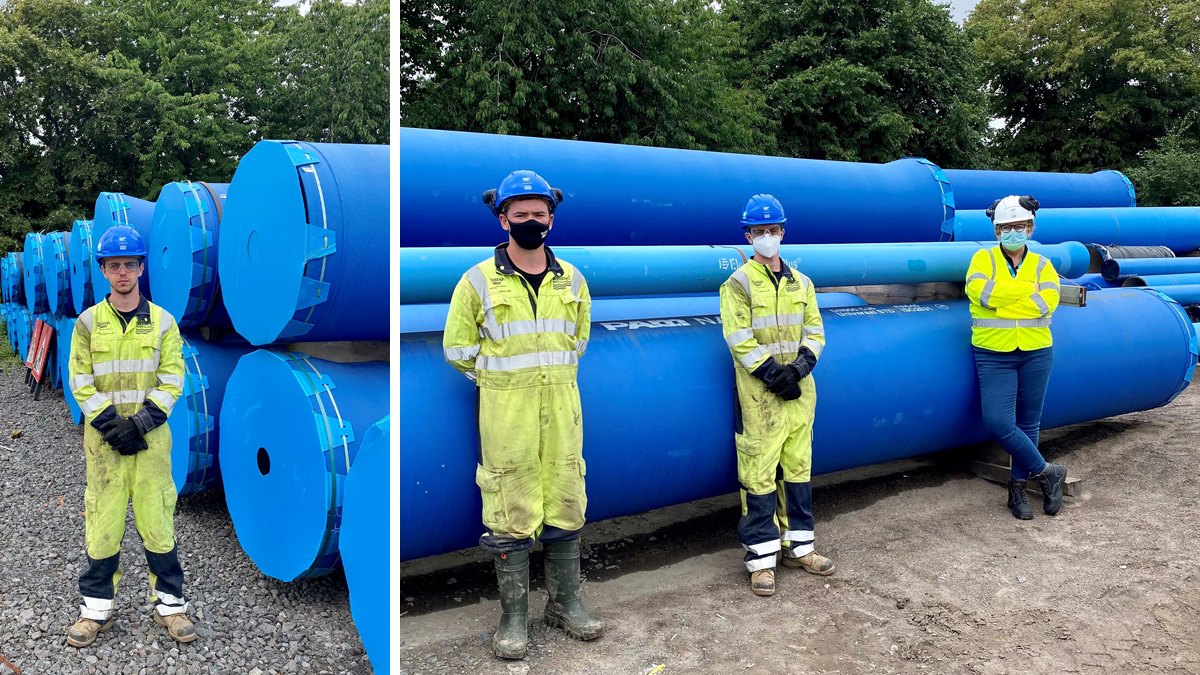
The apprentices – Courtesy of Caledonia Water Alliance
Project status
Linking supply systems will ensure that high quality drinking water can continue to be supplied to current customers and for generations to come. The investment in new pipelines and associated infrastructure below ground will also support the continued development above ground in communities across these areas and will enable them to continue to grow and thrive. Euan Kerr, Chief Operating Officer of CWA, said:
“We have welcomed the opportunity to deliver this high value, complex project to improve the water networks in Glasgow. We are tapping into the skills from our diverse, integrated team to ensure we deliver an innovative, sustainable and cost effective project whilst supporting a flourishing Scotland.”
Work is expected to be completed by 2023 and is the third stage of the overall project which has already delivered improvements in Ayrshire.
C1a Project: Summary
- 12km 900 diameter DI pipe with Saint Gobain PAM UK’s Universal VE joint.
- Average depth of the excavation is between 2.5m and 3m.
- Weight of the pipe is 2.2T.
- Complex trenchless pipe laying.
- Multiple stakeholders (Network Rail, SEPA, Transport Scotland, Glasgow City Council, East Renfrewshire Council).
- Complex traffic management.
- Temporary works.
- Combination of in-house delivery teams and sub-contract teams for pipe laying.


